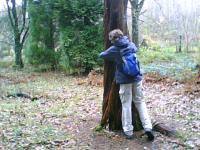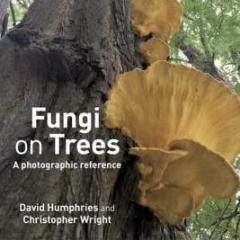-
Posts
52 -
Joined
-
Last visited
Content Type
Profiles
Forums
Classifieds
Tip Site Directory
Blogs
Articles
News
Arborist Reviews
Arbtalk Knot Guide
Gallery
Store
Freelancers directory
Everything posted by Tilia
-
Although this is an arb-dominated forum, I thought it is worth a shot. I'm looking around for any roles on estates or similar, similar to a forester/ranger/countryside worker. I've previously worked in conservation, arboriculture and forestry, including roles for the Forestry Commission and the National Trust for Scotland. I'm currently working in arboricultural consultancy, but find some of the ethics of working with developers difficult to deal with... and so, I've decided to start pro-actively start searching for a role that is more focused on tree and woodland management, with conservation and sustainable management really important to me. As far as experience goes, I've got NPTCs for chainsaws (including aerial work), pesticides and woodchippers; trailer towing; experience in fencing, coppicing and other woodland management, path works and dry-stone walling; general habitat management and conservation work; and doing tree safety inspections and making recommendations. I'm also currently studying an MSc in Forestry by distance-learning, and would love to be in a role to apply what I learn. If anyone reading either works for estates that could use a forester or conservationist, or know someone who does, I'd be really grateful if you could get in touch - I'd more than happy to give more details of my experience, or send a CV. Thank you for reading.
-
Thank you very much Tony - didn't know it could persist in that state, always looks like paper mache when I find it after its peak! Cheers mate.
-
I found this fungi in an open space adjacent to a Beech and a Norway Maple which was growing on a root. Initially I wondered about Meripilus giganteus. However, I would have expected MG to have rotted away whereas this fungi has become dried out and tough. Any thoughts?
-
Just realised that the person above has posted that link... ignore me!
-
Its threads like these that inspire me to learn more... and in doing so I stumbled across this: http://www.flac.uk.com/wp-content/uploads/2009/12/Monograph-on-Meripilus-giganteus.pdf probably nothing new to those of you with experience, but interesting to read none-the-less Keep up the tree health discussions please!
-
Me too mate! No way I'd recommend a fell, I'm more just interested into what's going on. So if the article on Eucalypts is correct, it's reaction wood on both the tension and the compression side... how? Can anyone elucidate further?
-
Does anyone have any idea what might be causing this wood pattern on a mature beech? It's on one tree out of a line of 16, no visible fruiting bodies of anything, and nothing really wrong with the crown at all. In fact that's the only thing that stood out! The only similar thing I can find is on p103 of The Updated Field Guide to VTA, there's a picture of a conifer with similar bulgewood. Has anyone seen anything like this before?
-

Looking to volunteer in interesting woodlands, Yorkshire
Tilia replied to Tilia's topic in Forestry and Woodland management
Hi mate, sorry for late reply - I'm out in Huddersfield if that's any use...? -

Looking to volunteer in interesting woodlands, Yorkshire
Tilia replied to Tilia's topic in Forestry and Woodland management
Hi Graham, Unfortunately that probably is a bit too far to travel - but thank you for your response anyhow, and hope your uncle enjoys his woodland! Cheers -
Really cool thread that I'm just catching up on! As for oak being a pioneer species debate... Oliver Rackham discusses this in his book "Woodlands", and believes that in the 1900s oak shifted from being a more typical canopy emergent species to a pioneer species. A theory he puts forward for this is the introduction of the mildew commonly seen on oak, which he thinks thrived in darker, damper, shaded conditions and meant oak performed poorly in this situation, and thus began to perform well only in pioneer, less-shaded situations. I don't know, but it's an interesting thought. Comments?
-
Hi there, I've just moved back to my home county of Yorkshire after working in conservation, arb and forestry for the past three years in Scotland. I'm doing a non-practical consultancy role down here, which I'm loving, but would still like to keep up a bit of practical work and have fun with a chainsaw every so often on a weekend. I guess I'm hoping that there might be someone on here who owns or works a woodland in the West Yorkshire area, hopefully someone with similar conservation-minded principles, who might like a hand every so often on a weekend. I have valid NPTC tickets and my own saw/PPE, and would happy to volunteer in return for the odd log for carving! Cheers for reading and feel free to message
-
Interesting perspectives! I couldn't see any sign of cankers, though absence of evidence is not evidence of absence. The main worry is the Pleurotus on the stem, although by my reckoning the target nearby (a road) will be hit only if the base or rootplate fails - if the stem snaps at the height of the currently-visible Pleurotus, it will just fall in the forest. The Flammulina is at the base area, so indicative of dysfunction in that part? And how good is Pleurotus at spreading through the wood - so far I could only see fruiting bodies up the stem, but I'm not sure how good it is at spreading up and down the tree? Cheers for your help guys!
-
Thanks for the responses - now to work out what to do with it!
-
Hi guys, found this fruiting body at the bottom of a veteran horse chestnut, and saw there were a few more still attached further up the stem. The only identification I could think of was that they were old Pleurotus conks? They were pretty past it and gelatinous to touch. I also found similar looking conks in a cavity at the base of a lime in the same woodland. Anyone confirm/correct my thoughts? On the same big Aesculus were these little orange/red fellas as well; Velvet shank is my guess...? Any help would be greatly appreciated. Many thanks!
-
I’m wondering if anyone has any thoughts or advice about a health-related dilemma that’s really upsetting me at the moment. I work in environmental conservation and use chainsaws regularly (on the ground and occasionally climbing), as well as other machines like brushcutters. I work for a conservation group which regularly screens employees for symptoms of HAVS (hand-arm vibration syndrome). Since I’ve been on the tools, which is only about 3 years, I’ve almost always had a numbness in my left hand after using vibrating machinery for an extended period. I also get wrist pains occasionally (though I get that after practical work alone, without the use of tools) and a burning sensation in my hand (which I remember getting at uni, before I’d even been exposed to vibes). This has led me to think that if anything I have carpal tunnel syndrome in this hand, which vibrating machines probably make worse but didn’t initially cause. However, I absolutely love working in woodland conservation and with trees, and I enjoy the arb/climbing side too. So my dilemma is, do I mention this numbness in a HAVS test at work? If I do this, I will probably be given an immediate positive result and removed from the tools, and thus be pretty much redundant in my job – the end of a dream, really, as I’d have to give up a job I absolutely love and want to do more than any other. If I don’t mention it, the problem will probably get worse, until I begin to lose feeling and function in my hand - which isn’t attractive either. In reality, the sensation is not really a big problem at the moment, but it's one of the "early warning signs" that the HSE advise to watch out for, so it's on my mind. I’m interested to know if anyone out there has been in a similar position, or is an employer who has to deal with this problem in their staff? I’d like to think that occupational health testers would realise that it’s CTS and not the circulatory problems associated with vibration, and perhaps suggest surgery or medication. However, the likelihood is that they would simply class it as “HAVS” and give me a positive result, which would then go back to my employer. Does anyone know if employers are likely to reduce one’s daily vibration exposure limit, or completely take me off tools – meaning I’d have to leave my dream job, as well as meaning I’ve wasted all the money I’ve spent on training? I’m really not sure what to do and any thoughts or advice would be greatly appreciated… I know I should mention this feeling in tests, but I’m scared that instead of trying to solve the issue, occupation health will simply say I cannot do my job and that will be the end of my career that I love.
-
Hello, found these three brackets on one branch on a cotoneaster shrub at work... after looking in Mattheck and Weber and in the Fungi directory here, I think it's probably Daedaleopsis confragosa. Can anyone here with more experience of fungi tell me if I'm on the right tracks or barking up the wrong tree, so to speak? Thanks folks!
-
That's interesting... I'm an ecology graduate who is now working in arboriculture! Ditto the other guys on volunteering, I learnt at least as much "in the field" as a volunteer and subsequently a paid ranger as I did at uni doing the degree. Having said that a qualification is very useful, especially with all the competition, so have a look at maybe doing a HND in countryside management/environmental science/ecology or similar. Contact the National Trusts, Wildlife Trusts and smaller environmental organisations (like local rivers trust etc) and see what they're doing. If you're interested in something in particular then find out who in their organisation does that (e.g. bat surveys/GIS) and help them out. Also contact your local authority to see if they have a wildlife officer, I volunteered doing ecology surveys with mine in Leeds. Also, have a think about whether you can afford to do a long-term volunteer placement. It's not ideal but it's more useful than "ad hoc" volunteering. For instance I had volunteering experience before leaving uni, but when I left I did a full-time 5 month placement with a Wildlife Trust - I got expenses for travel and some food paid for, it was a recognised placement/scheme, and it definitely helped me get my first job a few months after finishing. Best of luck to you, I'm sure that doors will start opening soon!
-
The HSE advice to employees says that both VWF and/or CTS can be caused by exposure to vibration. See http://www.hse.gov.uk/pubns/indg296.pdf I'm just surprised and concerned at how many people actually seem to develop CTS in this industry... I thought that with the new AV systems on modern chainsaws it wouldn't be an issue anymore. Perhaps there is also an issue with the repetitive movements of tree causing CTS as a type of repetitive strain injury, such as maybe the movement of putting on a chain brake? If you don't mind me asking, how did you find the surgery? Does it have to be quite bad to get surgery in the first place? Other people on here seem to suggest less drastic measures first but like you say some of them may not be as effective.
-
do a-v gloves work then? The HSE claim that they have no effect or may even make vibration worse. I have a pair as a precaution but not sure whether just a thick pair of work gloves would be just as effective. So stretch out to try and avoid CTS, and keep hands warm and dry to avoid VWF..? And for both, make sure you take breaks and use the lowest vib machinery I guess. I definitely notice the difference between a blunt saw and a sharp saw, it's just a shame that some people feel so under pressure to work that they don't take time to keep tools sharp.
-
According to HSE vibration can cause circulation problems ie vib white finger, and also nervous problems in the form of CTS. I think a lot of the CTS cases with arb guys will be down to vibration from chainsaws, hedge trimmers, strimmers and so on. I'm just wondering if it is quite common, what can be done to prevent it, and whether there are varying degrees of it...?
-
So what are the actual symptoms of CTS? How you do tell if similar sensations e.g. tingling hands are due to something different e.g. nerve damage or back problems? And how old are people generally before they get diagnosed with CTS? Does it occur soon after using chainsaws and vibrating machinery?
-
Not yet, but I'm looking forward to getting out and picking some wild garlic leaves. Would love to try tapping birch sap but not sure how and what to do with it... heard it makes good wine though...?
-
So is there a difference between being self-employed and starting your own business? I'm currently in a temporary arboriculturalist post in Edinburgh - enjoying it, but well aware that the end of contract creeps closer each day. What are the options when it ends if work is too hard to find?
-
Ciaran - hope you don't mind but I saved a copy of those two! I'm an ND arb student so have been studying some of those diseases, but some of them we haven't touched on so it'll be good to know which ones to research into. Arran, as part of our course we are making similar "flash cards" and they're a really good way to get to know the fungi - I'll be using Ciaran's as a basis for which fungi I should make additional information sheets on. Also, Weber & Mattheck's book is top notch.
-
Try this? A guide to lichens on twigs - The Natural History Museum















